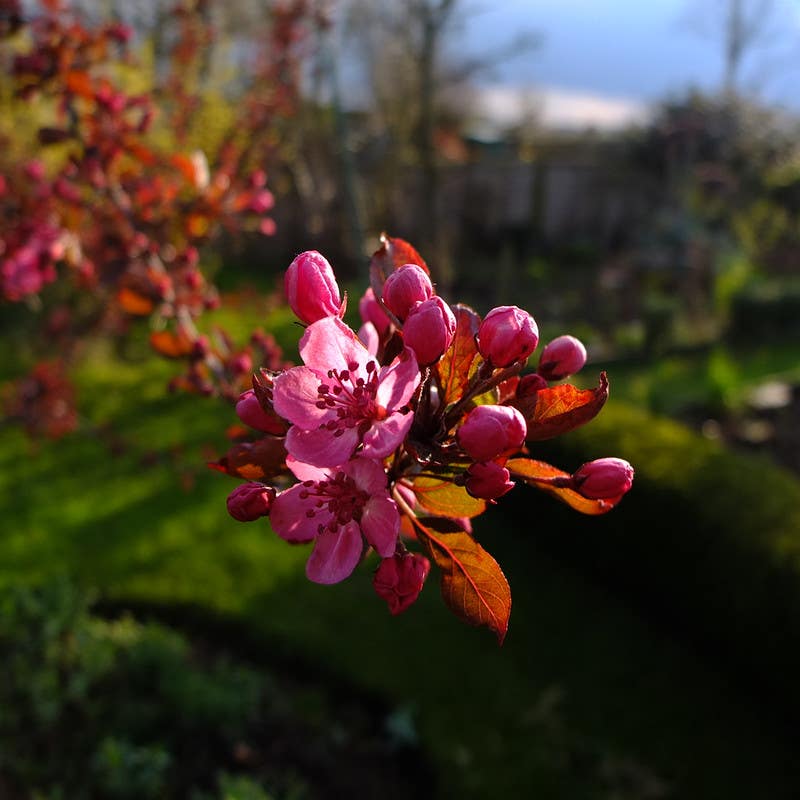How to Grow African Violets as a Houseplant
What can you tell me about growing African violets? I never have success. Answer: African violets, of the genus Saintpaulia, come in an array of radiant flower colors—usually in alluring…
What can you tell me about growing African violets? I never have success.
Answer: African violets, of the genus Saintpaulia, come in an array of radiant flower colors—usually in alluring hues of purples, pinks, reds and whites, as well as in an abundance of different shapes and textures. These stunning, exotic beauties are perfect for showcasing as lively décor for a little pop of color and form.
African violets are popular houseplant options that are relatively easy to care for. With that being said, proper maintenance is crucial in order to have healthy, perfuse blooms. Here are a few general tips for growing African violets:
• Soil/potting: African violets should be grown in a pot with drainage holes. Many growers will cover the holes with pebbles/gravel to keep soil from falling through. Repot into larger containers as the plants grow. African violets thrive in loose, well-drained soil rich with organic matter. Many gardeners will use African violet soil mixes or incorporate amendments such as peat moss, perlite and vermiculite into general potting soil. You can fertilize if you notice slow or decreased growth with a water-soluble fertilizer for blooming plants. Follow as directed.
• Lighting: Proper lighting is crucial to the success of African violets. If your plant isn’t blooming, it is probably an issue with light. African violets need lots of indirect light, but too much can damage the plants. Place in a north- or east- facing window in the warm months. You may have to supplement with fluorescent lighting as needed. In winter, many growers move containers to south- and west- facing windows. Plants that receive too much light will have darker and thinner foliage; plants receiving too little lighting will have pale, yellowing leaves. Adjust accordingly. Keep in a location with constant nighttime temperatures between 65 to 70˚F, with slightly increased temperatures during the day. Make sure temperatures don’t fall below 60˚ and avoid putting your violets in a drafty place.
• Water: Allow the soil to feel dry to the touch before watering. You want to water just enough to keep the soil moist. When watering avoid splashing the leaves as they can develop dead spots. If any water does hit the foliage, pat dry with a paper towel. Many gardeners will occasionally water from the bottom up, by submerging the pot in water. Leave it for no more than 30 minutes. Room-temperature water is preferred, and African violets do not do well with water heavy with chemicals. Some people will leave the water sitting out to help any impurities to evaporate before watering. Humidity is essential for African violets success. However when supplying extra humidity, do not mist these plants as you would other humid-loving houseplants—as water produces dead spots. Either use a humidifier or place the container over a tray filled with a thin layer of water mixed with lots of pebbles/gravel.
• Maintenance: Pinch off any spent flowers/stems to help encourage new growth. If using fertilizer, stop feeding in winter while the plant is dormant.
Image: Wildfeuer
-------------------------------------------------------------
The Garden How-To University: Growing Perennials is filled with everything you need to know for growing a successful perennial garden.
Gardening with Perennials Month by Month describes the monthly blooming schedules and growing requirements of over 700 beautiful perennials.
The Gardener’s A-Z Guide to Growing Flowers from Seed to Bloom is a great reference to more than 500 annuals, perennials and bulbs—perfect for creating flourishing flower gardens full of season-round beauty.
Choose the right plants for the perfect spots in your gardens with the Garden How-To University: Proper Plant Selection & Maintenance download.
Download the Smart Gardening Guide: Problem Solving for great advice on overcoming common gardening problems.







